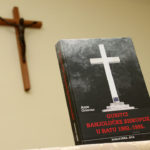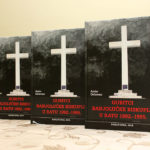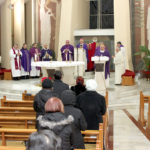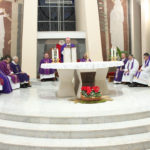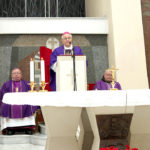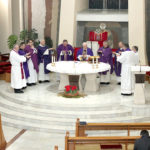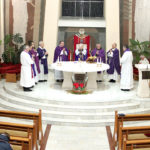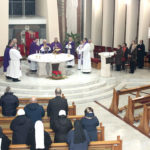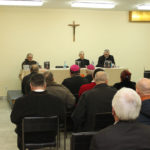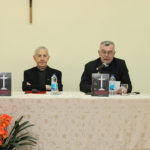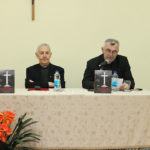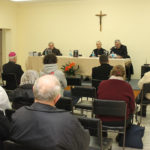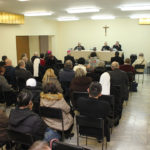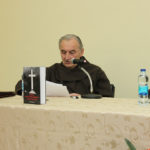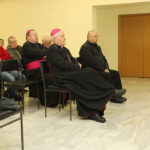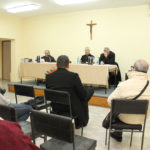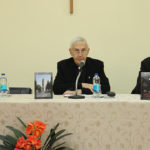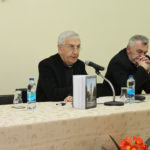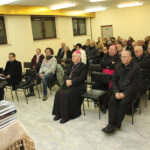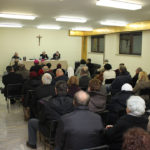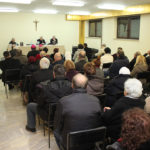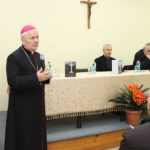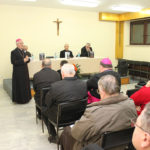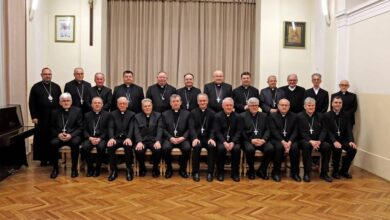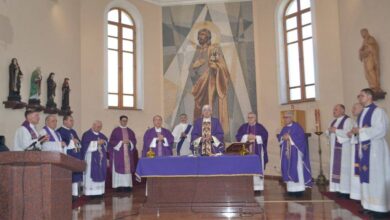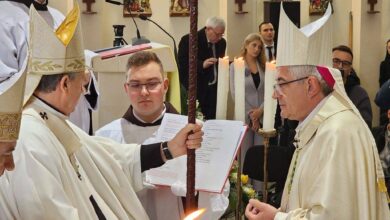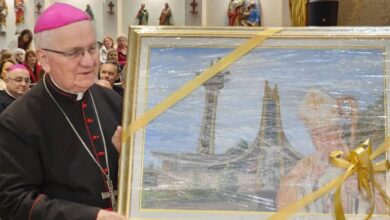PRESENTATION OF THE BOOK OF MARTYRS OF DIOCESE OF BANJA LUKA
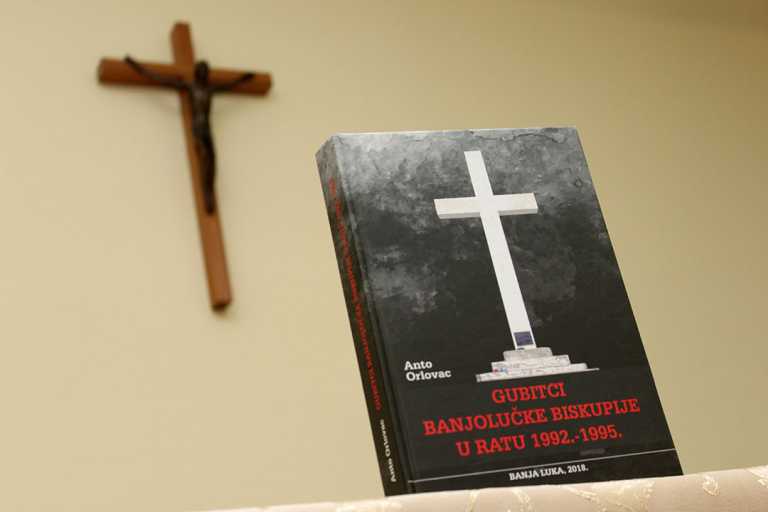
Book „Gubitci Banjolučke biskupije u ratu 1992. – 1995.“
The book is a kind of martyr’s book of diocese of Banja Luka in the last war in BiH. 1 054 victims, 614 civilians and 440 soldiers are written down. On January 26th, in the hall of Diocese’s ordinary in Banja Luka, a book of dr. Msgr. Anto Orlovac, „Gubitci Banjolučke biskupije u ratu 1992. – 1995.“, was presented.
The book is a kind of martyr’s book of diocese of Banja Luka, where the author wrote down all civil and military victims from the area of diocese of Banja Luka in the last war.
Msgr. Ivica Božinović talked about the book, as well as retired professor OFM Velimir Blažević and the author himself. “The book is extremely heavy, you will see that when you hold it. But it is heavy because of its content as well”, said Msgr. Božinović.
After the introduction notes (pages 5-35), follows individual list of victims from six deaneries of Banja Luka diocese (pages 37-268), after which comes two reports from parish priests about casualties of parishes Sokolina and Liskovica. After named sources and literature there is an alphabetic list of casualties in the whole diocese what gives the book a great transparency. The book ends with picture inset (about 40 coloured photos) about keeping memories of the victims of the last war in diocese of Banja Luka.
Reliable book
Prof. Blažević presented the general statistical information that is found in the book, data for each of the victims, and talked about the value and reliability of the book and the data written into it. The total number of Catholic victims in the area of the Banja Luka diocese in the last war was 1054, of which 614 civilians (including seven priests and one nuns) and 440 soldiers (members of various armies, mostly HVO) or 910 men and 144 women. The majority of the total victims had the Bihać deanery (386 victims), which is the first in the number of civilian casualties (282), while the Jajce deanery had the highest number of military casualties (106). Parish with the largest number of total victims is Jajce (136), while the parish with the most civilian victims is Stara Rijeka (81).
Prof. Blažević in his speech emphasized that thanks to Dr. Orlovac’s research this book does not only produce dry figures in the victim’s number but also in the concrete persons: with the name and surname of each victim, with their parents’ names and mother’s maiden name or spouse’s name, with information on when and where the victim was born, where he lived, which religion and nationality he was, when, where and how he was killed, whether he was civilian or soldier, and where he was buried.
Recorded way of suffering
Prof. Blažević further outlined some information about places and cruel ways of killing civilians and soldiers. So about civilian victims it is said: “he was taken out of his house and killed in the yard”, “massacred and killed in his own house”, “hanged in his house”,
“slaughtered by the četnici in his house”, “killed by an explosive device placed in the window of her house”, “burned down in her home, which was lit by Serbian terrorists”, “killed with a dull object”, “killed by an iron rod”, “slain at home”, “stabbed”, “terribly abused and massacred: tied to the oak and slaughtered near his home (his face crossed in the form of a cross )”, (…) “killed in the camp or died of the consequences of torture in the camps” (and then cited: Keraterm, Omarska, Manjača, Betonara at Sanski Most, Kamenica near Drvar, Batković near Bijeljina), “had to collect the dead by the order of četnici and drive to a mass grave and then shot as an undesirable witness …”
Prof. Blažević in the end pointed out that this book will be an inevitable source for all those who will be involved in the research of victims in the recent war, and its reliability lies in the fact that the data is based on credible sources, primarily on official church books (baptismal , married and deceased), but also to other authors who have been investigating the victims by checking them, critically reviewing them, and, if necessary, correcting each wrong quote. “Therefore, it is perfectly rightibly to say that this book represents the most reliable and safest source for gaining insights into the size of crimes committed against innocent civilians Catholics and Croats in the parishes of the diocese of Banja Luka”, concluded prof. Blažević.
A permanent memento
In the end, the author himself spoke about his book, Msgr. Orlovac, who for many years has been studying the past of the diocese of Banja Luka and its parishes, and also its victims believers in the past wars. For them he wanted to leave a lasting memory, and that encouraged him to write this book.
The author talked about the content of the book and the difficulties that followed him in this work. He particularly emphasized the gathering of basic data on the suffering of the diocese of Banja Luka priests – the nine who were directly killed or died of the consequences of the war, and one of the nuns, and to them also needs to be added the five priests who later died, but they all endured the consequences of serious suffering they barely survived. This means that in the diocese of Banja Luka there have been 15 spiritual vocations that were victims in the recent war, more than in all the other dioceses in the Republic of Croatia and BiH.
The author is aware that such a work is necessarily subject to mistakes or incomplete data, and asks the readers to help – if they have – accurate data to be corrected in the future.
In the end, he emphasized that he wrote this book “with the faith of a Christian believer”, which is also seen in shaping of the book covers. On the front page is a white cross on a dark background, and the last page brings the character of Risen Christ with the church in the background. Both the cross and the statue are real – a memorial cross for the died defenders on the mountain Korićina between Livno and Glamoč, and a statue near the parish church in Lištane. He wanted to send a faithful message: the white cross in contrast with the darkness in the background highlights the faith in winning good with Jesus, and with the image of the Risen Winner on the back cover, with lots of light, faith in the resurrection.
Before the book presentation, in the cathedral of St. Bonaventura, holy mass for all the victims of the diocese of Banja Luka in the past war was led by Msgr. Franjo Komarica, the bishop of Banja Luka, in concelebration with his auxiliary bishop Msgr. Marko Semren and nine other priests.
www.nedjelja.ba


